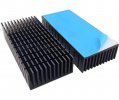A.I couldn’t help myself and added 2x V3M and the SP601 speakers to my previous pledge for 3xV3M.
I have a 5.1 setup with a Marantz S6012 as receiver. My speaker setup is as follows:
- Fronts: Monitor Audio GS10 (relatively modest speakers)
- Center: Monitor Audio GSLCR
- Surrounds: the idea is to put the SP601 as surrounds.
Now, with 5 V3 Mono’s to play with, should I go for:
A. Each speaker its own amp
B. Bi-amp the fronts, and drive the surrounds with the S6012’s internal amp?
Of course I’ll experiment, but happy to hear your thoughts on this
Bi-amping is a waste of money, both on amplification, and on cable. There are no audible benefits to be had, unless you are removing the crossovers from the speakers, and going fully active with digital crossovers upstream of the amps.


